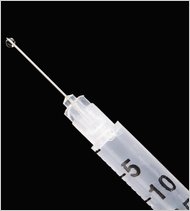
Swine flu vaccine due next week in Pa., N.J.
After months of anticipation, the first doses of swine flu vaccine are expected to arrive next week, public health officials said yesterday as the federal government began accepting orders from the states.
In Pennsylvania, they will go to healthy children ages 5 to 9 in just three regions of the state, including the southeast. New Jersey will direct a smaller number of doses to ages 2 through 24 statewide.
The priority lists are likely to change weekly, if not daily, as the federal government ramps up the biggest vaccination campaign it has ever attempted.
Pregnant women, for example, are among those at highest risk from the disease – but the first doses, in a nasal spray, will be a form of live virus that isn’t safe for them. Shots made with an inactivated or “dead” virus should arrive a week or so later.
The live virus is safe for children without underlying medical conditions. Children are the most likely of all age groups to catch and spread the new flu. While most people will require one dose, children under 10 will need two, nearly a month apart, to trigger a robust immune response. (The same applies to children getting seasonal flu vaccine for the first time.) So children will get first dibs.
“Targeting the healthy and the young is a good way to get this vaccine out quickly to a significant population,” said Susan Walsh, a deputy state health commissioner in New Jersey.
Where to get the vaccine?
Officials in both states urged parents to call their pediatricians, although they are not likely to know that they will have the vaccine until it actually arrives. Many schools, including those in Philadelphia, will hold vaccination clinics; letters and permission forms will go out to parents beforehand.
Health department Web sites for New Jersey, Pennsylvania, and Philadelphia – the three local overseers for swine flu vaccination – will list locations when more doses become available, officials said. All vaccinations are voluntary.
Because the swine flu vaccine was purchased entirely by the federal government, providers can charge only an administration fee, and many will offer it free. It generally will not be available from supermarkets and pharmacies that run clinics for seasonal vaccine.
Swine flu was more common than the seasonal strains in the southern hemisphere, which experienced a full influenza season after the novel H1N1 first appeared in Mexico and the United States in April.
That has led to scattered reports in the north that the seasonal vaccine would be unnecessary. Public health officials strongly disagreed.
“We have no idea what the interplay is going to be between [swine] flu and the seasonal flu,” said Stephen Ostroff, Pennsylvania’s acting physician general.
Those seeking to cover all their bases might also want to consider a report from the U.S. Centers for Disease Control and Prevention yesterday saying that, as in previous flu pandemics, bacterial pneumonia contributed to some swine flu deaths in spring and summer.
Pneumococcal vaccine is in plentiful supply, as is seasonal flu vaccine.
But no one knows how many people will want them, let alone the new swine flu vaccine. Just 35 percent of adults in New Jersey and 38 percent in Pennsylvania said they got the seasonal flu vaccine last year, according to the most recent federal survey.
And a Consumer Reports poll released yesterday found that just 35 percent of parents said they definitely would have their children vaccinated for swine flu.
“Who wants it? Who knows?” said Caroline Johnson, director of the division of disease control for the Philadelphia Department of Public Health.
Despite the newness of the vaccine, public health officials say they have no safety concerns. It is essentially the “seasonal vaccine with a different strain contained in it,” said Ostroff.
The first-to-arrive spray form of the vaccine contains no thimerosal – a preservative that some people believe is linked to other diseases – and later versions will be available both with or without it, officials said.
Swine flu , Swine flu Health, Swine flu Health Latest, Swine flu Health Information, Swine flu Health information, Swine flu Health Photo,Swine flu for Weight Health photo, Swine flu Health Latest, Swine flu Health latest, Swine flu for Weight Health Story, Swine flu Video, Swine flu video, Swine flu Health History, Swine flu Health history, Swine flu over Picture, history, Swine flu Asia, Swine flu asia, Swine flu Gallery, Swine flu for Weight gallery, Swine flu Photo Gallery, Swine flu Picture, Swine flu picture, Swine flu Web, Malaysia Health, web Health, web Health picture, video photo, video surgery, gallery, laparoscopy, virus, flu, drug, video, Health Health, calories, photo, nutrition, health video, symptoms, cancer, medical, beating, diet, physical, Training, organic, gym, blister, exercise, weightloss, surgery, spiritual, eating, tips, skin, operation, bf1





